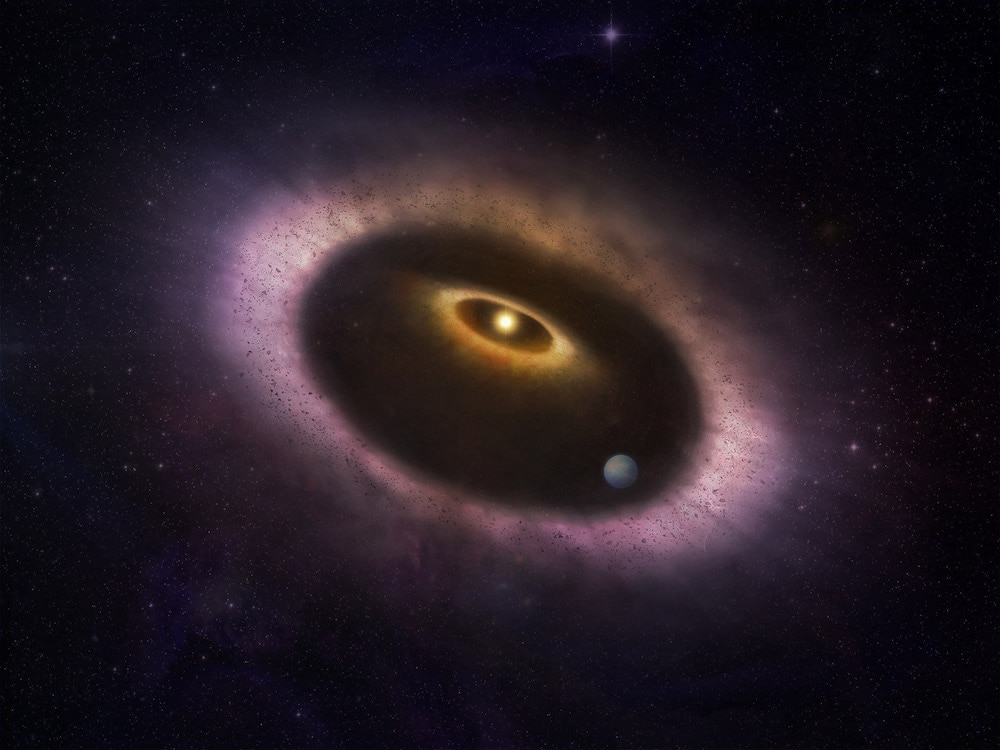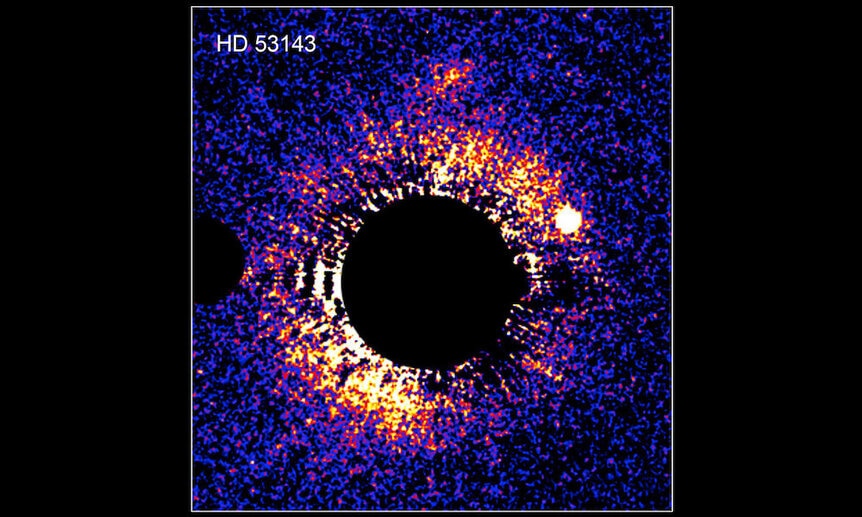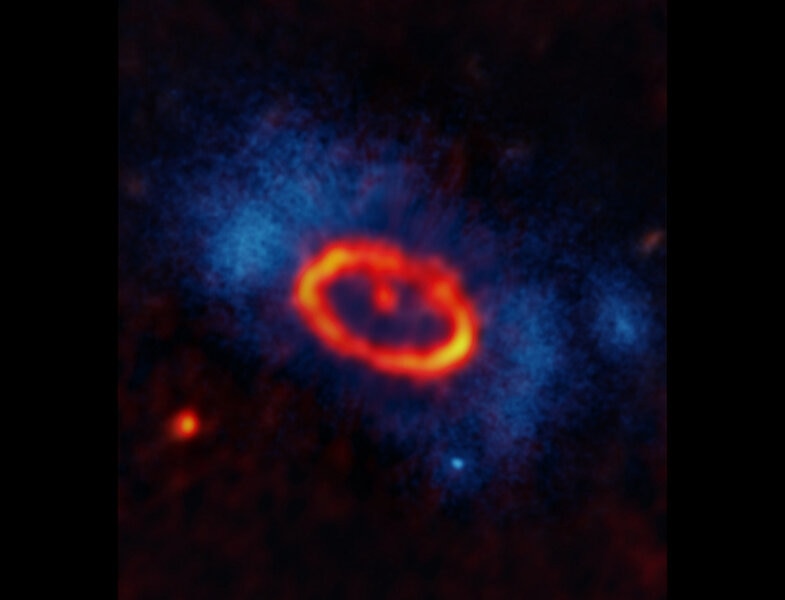Create a free profile to get unlimited access to exclusive videos, sweepstakes, and more!
Unseen planets kick a ring of debris off-kilter around a nearby star
We may be seeing what the Sun was like when it was a rebellious teen.

One of the more amazing things about astronomy is how it acts like a time machine.
For example, we sometimes see things so far away that it takes light billions of years to reach us, so we see that object as it was when it was young.
But in another way, we can travel in time by looking at a star that is very similar to but far younger than the Sun is now. It’s not perfect, but it does give us an idea of what our nearest star was in its youth.
HD 53143 is one such star. It’s a little cooler and dimmer than the Sun — a G9V for people who like their astrojargon — and probably about a billion years old. The Sun is 4.6 billion years of age, so HD 53143 is quite a bit younger. And at only 60 light-years from us it’s close enough to study in detail.
When stars are first born they’re surrounded by a disk of material that forms the star itself as well as the planets, asteroids, comets, and various small bodies that orbit it. Over time a lot of the material in that disk either is used up making all those bodies, or gets blown away by the star after it switches on. But there can still be a lot of detritus in orbit; out past Neptune in our solar system there are trillions of icy bodies with dust and rock embedded in them, called generically Trans-Neptunian Objects. There’s a disk of them just past Neptune’s orbit called the Kuiper Belt, a semi-flat annulus with the Sun at its center. As these objects collide over time, they generate dust that also orbits the Sun.
HD 53143 has something like that too, but it’s a lot different. Called a debris disk, it was discovered in Hubble Space Telescope images in 2006. The images showed it, but it was faint and difficult to analyze. It looked pretty circular, like we were seeing it face-on, with a couple of brighter regions in it. Followup Hubble images with a different camera showed it a little better, but lacked the detail needed to really nail down its structure.
However, new observations using the Atacama Large Millimeter/submillimeter Array have, for the first time, resolved the disk at long wavelengths, where that dust glows from its own heat. And what it shows is not at all what was expected [link to paper].
For one thing we’re not seeing it face-on at all. It looks like an ellipse, not a circle. But also, look at the star: It’s decidedly off-center! That makes sense if the disk truly is elliptical; the dust orbits HD 53143 in an ellipse and the star, if you remember your high school math, is not in the center but at one focus.
Note the bright spot to the lower right. That’s likely the apoapsis of the dust — the part in its orbit when it’s farthest from the star. Orbital motion is slowest there, and the dust piles up around that location. More dust = brighter light.
An elliptical ring like this has been seen before. The dust ring around the bright star Fomalhaut is also an ellipse, but the one around HD 53143 is much more elliptical — astronomers say it has a higher eccentricity.
That’s peculiar. You’d expect that material, like the dust in our Kuiper Belt, to orbit the star in a circle with the star itself at the very center. So why is the ring elliptical?
The simplest explanation is that there is a planet or planets orbiting the star yanking on it with their gravity, tugging it into an ellipse. These planets are too small and faint to see with the observations we have now, so we can’t say for sure they’re there. But it’s the way I’d bet.
Also, there’s an inner disk not seen in the ALMA images, but detected in the earlier Hubble ones. It’s too close to the star to say much about it, but it doesn’t look like it’s aligned with the disk seen by ALMA; it’s tipped and rotated at a different angle to us. Early on in a solar system the planets can move toward or away from the star as they interact, and that migration could explain why the rings are misaligned; the planet’s or planets’ gravity could yank on the inner disk and muck with the dust’s orbit.
It’s possible the outer ring is funneling material down toward the star and feeding the inner disk, perhaps again focused by a planet or multiple planets, which would also be a reason the disks are tilted. However they formed, they’re pretty odd.
It’s not hard to look at HD 53143 and wonder if our own solar system looked like this 3+ billion years ago. Was there a young Kuiper Belt that was seriously off-kilter as well, perhaps affected by the baby versions of the outer giant planets? And over those eons, it settled down a bit?
I can relate to that. I was a teenager once, and definitely eccentric, if not literally dusty. But it’s interesting that there are some parallels between our own lives and those of stars. And if those parallels are true from star to star, then HD 53143 may be telling us what things were like in the solar system’s, and Sun’s, own impetuous youth.





























